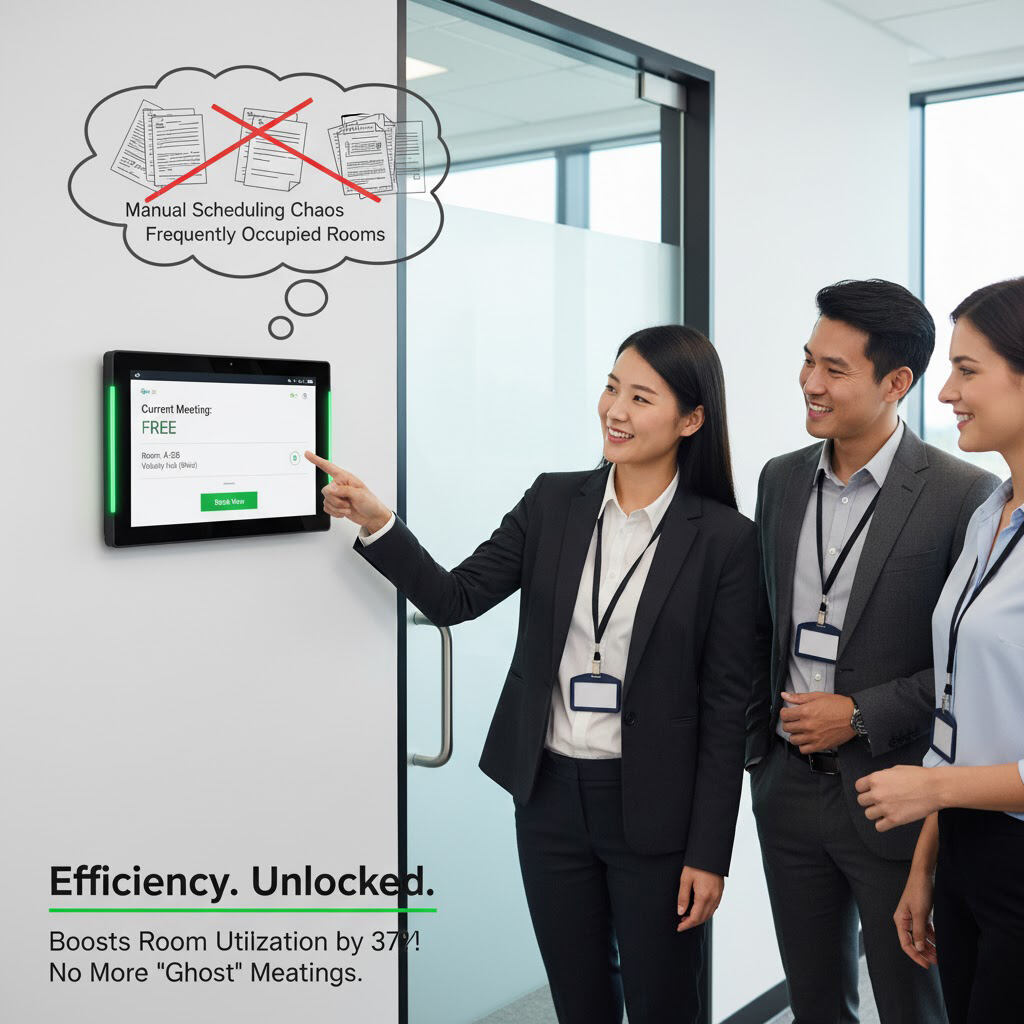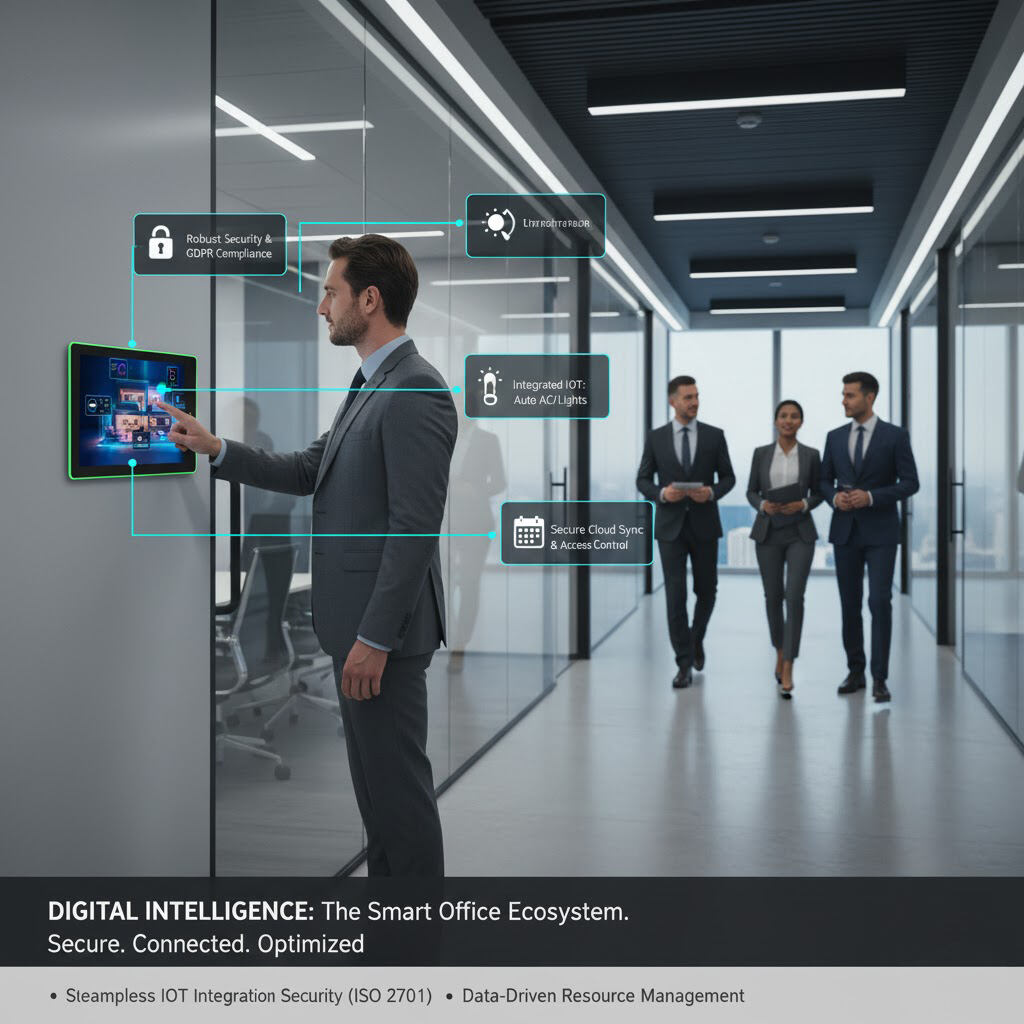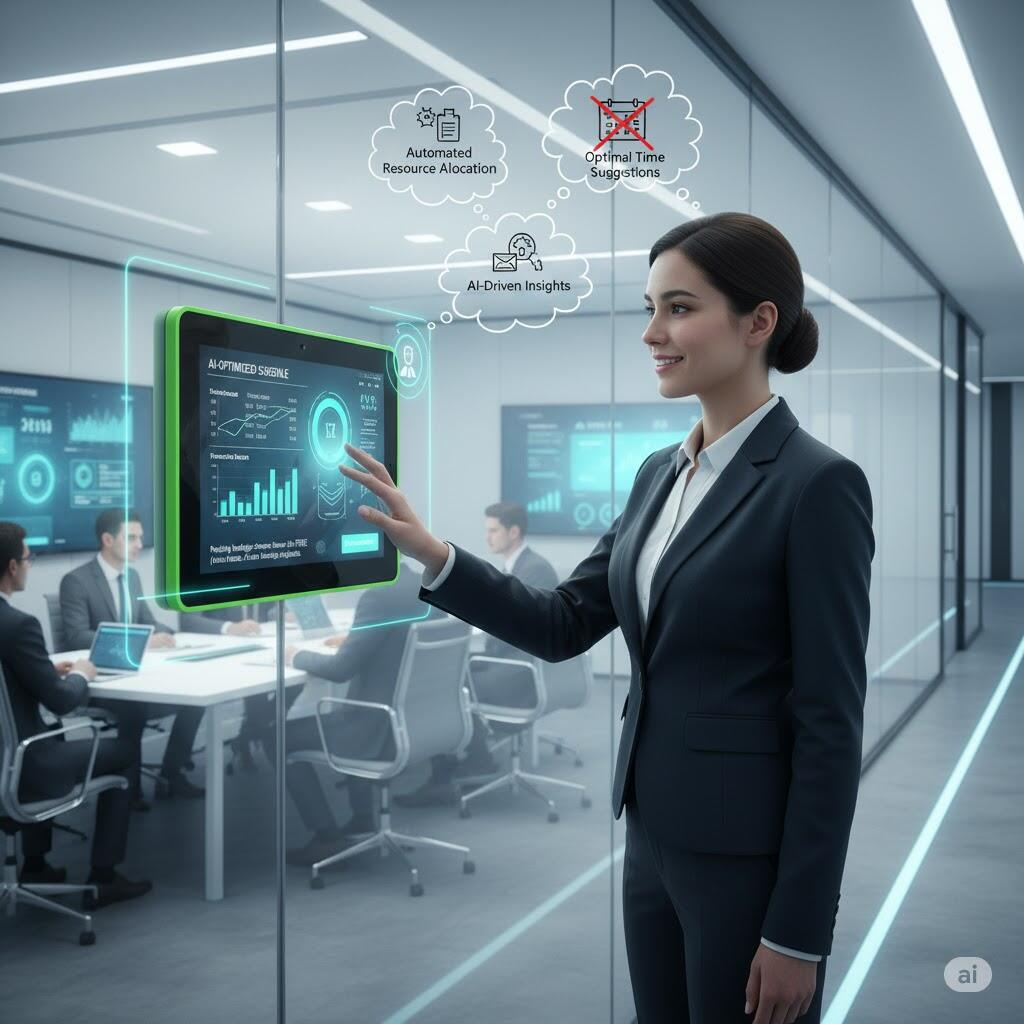The Future of Workspace Management: From Whiteboards to Smart Tablets

The Changing Landscape of Modern Workspaces
The modern office is no longer defined by cubicles and conference tables — it’s shaped by collaboration, flexibility, and digital integration. As hybrid work becomes the new normal, organizations are reevaluating how employees interact with physical spaces. The traditional whiteboard or manual scheduling book once symbolized teamwork, but in today’s digital-first era, these tools have become bottlenecks to efficiency.
A recent global survey by Gartner revealed that 74% of companies are planning to permanently shift to hybrid work models. This transformation brings a new challenge: how to manage meeting rooms and shared spaces efficiently. Mismanaged bookings, double reservations, and wasted time have turned meeting room scheduling into a silent productivity killer.
From Chaos to Coordination: The Rise of the Meeting Reservation Tablet
Enter the meeting reservation tablet — a digital solution that brings order to the chaos of modern office scheduling. Mounted outside conference rooms, these office scheduling displays synchronize with enterprise calendar systems to show real-time room availability. Employees can check schedules, reserve spaces, or release rooms directly from the screen without relying on administrators or manual records.
Unlike traditional booking systems, the conference room booking tablet integrates seamlessly with tools such as Microsoft Outlook, Google Workspace, or enterprise resource planning systems. With features like color-coded LED indicators, touch-screen interfaces, and cloud-based synchronization, it transforms the once frustrating act of room booking into a frictionless experience.

Rethinking Efficiency: Data-Driven Workspace Optimization
Beyond convenience, meeting reservation tablets have become data-rich endpoints that feed valuable analytics into enterprise facilities management. They record booking frequency, room occupancy rates, and cancellation trends — insights that help organizations optimize real estate usage.
According to a report by JLL, nearly 40% of meeting rooms in large enterprises are underutilized. By leveraging smart office analytics from booking tablets, facility managers can right-size spaces, redesign layouts, and even reduce leasing costs. These insights transform meeting management from a simple scheduling task into a strategic asset for resource optimization.
The Human Element: Enhancing Collaboration and Transparency
One of the most underestimated benefits of conference room management tablets is their ability to reduce workplace friction. Employees no longer need to interrupt colleagues to ask if a room is free or send multiple messages to confirm a reservation. The information is visible, transparent, and updated in real time.
Imagine an enterprise where each meeting space is equipped with a digital room scheduling display showing not just current occupancy but also upcoming bookings and equipment availability. Teams can plan impromptu huddles, executives can book strategic sessions, and remote participants can join seamlessly through integrated video conference links. In this environment, technology quietly amplifies human collaboration instead of complicating it.

Practical Integration: Setting Up a Smart Meeting Reservation System
Implementing a meeting room booking solution in an enterprise environment is remarkably straightforward. Most modern tablets connect to existing Wi-Fi networks and link directly with the organization’s scheduling software. Installation involves mounting the device outside each conference room and configuring it with the company’s preferred booking platform.
For example, in a 200-employee company with multiple departments, deploying smart meeting tablets across floors ensures every team has equal visibility into room usage. When an employee cancels a booking, the tablet automatically releases the room, making it instantly available to others — no administrator required. IT departments appreciate the low maintenance and centralized control, while HR teams value the boost in transparency and fairness.
Cost Efficiency and ROI: Beyond the Initial Investment
At first glance, some enterprises hesitate to adopt meeting reservation tablets due to perceived upfront costs. However, long-term benefits quickly outweigh the investment. Reduced administrative overhead, fewer scheduling conflicts, and optimized room utilization contribute to measurable cost savings.
In one case study, a global consulting firm implemented office scheduling tablets across 60 locations. Within six months, the firm reported a 25% increase in meeting room utilization and a 15% reduction in space-related overhead. The return on investment wasn’t just financial — it improved employee satisfaction and reduced frustration from overbooked or empty rooms.

The Smart Office Ecosystem: Interconnected and Intelligent
Today’s enterprise meeting solutions extend far beyond simple scheduling. Meeting reservation tablets often integrate with IoT devices, access control systems, and environmental sensors. They can automatically adjust lighting or air conditioning when a meeting begins, or lock the room once a session is in progress.
These integrations are part of a larger smart office ecosystem, where every device — from door sensors to desk booking systems — communicates to enhance comfort and efficiency. This shift from isolated tools to connected systems marks a major milestone in workspace digitization. The meeting reservation tablet serves as the gateway to this intelligent network, bridging physical environments with digital intelligence.
Security and Compliance in the Digital Workplace
As workplaces grow smarter, data security becomes an essential consideration. Modern meeting room displays for enterprises are built with robust encryption protocols, user authentication layers, and secure cloud storage. Enterprises can manage permissions, define user roles, and track booking history to ensure compliance with corporate IT policies.
For industries dealing with sensitive information — such as finance, healthcare, or government — these security features are crucial. They allow digital transformation without compromising data privacy, aligning with international standards such as ISO 27001 or GDPR.

The Next Chapter: Predictive and AI-Driven Meeting Management
The next evolution of conference room booking technology lies in predictive intelligence. Future meeting reservation tablets will not only display schedules but anticipate them. By analyzing historical booking data and employee behavior, AI can predict demand patterns, suggest optimal meeting times, and automatically allocate resources.
Imagine a scenario where the system recognizes that a weekly project meeting tends to overrun by 15 minutes and adjusts future reservations accordingly — or where it reallocates underused rooms to teams with higher booking demand. This level of automation represents the true frontier of workspace management solutions in the smart office era.
Redefining Collaboration in the Digital Age

From handwritten whiteboards to intelligent office scheduling displays, the evolution of meeting management reflects a deeper transformation in how enterprises collaborate. The meeting reservation tablet is not merely a gadget; it’s a symbol of how technology reshapes the way people use space, share information, and connect ideas.
In a future where flexibility, data, and sustainability define business success, digital meeting management systems will remain at the heart of modern workplace design. The organizations that embrace these tools early will not only streamline operations but also create environments where collaboration can truly thrive.

